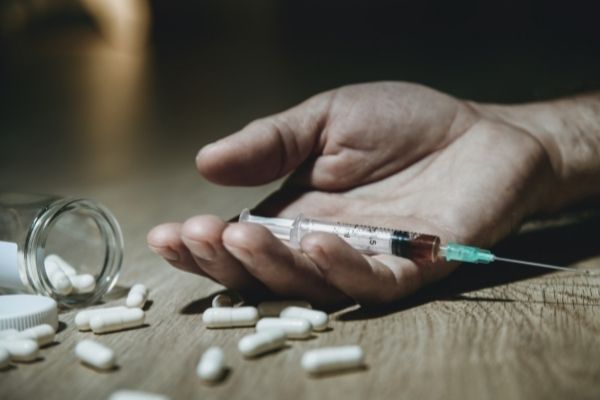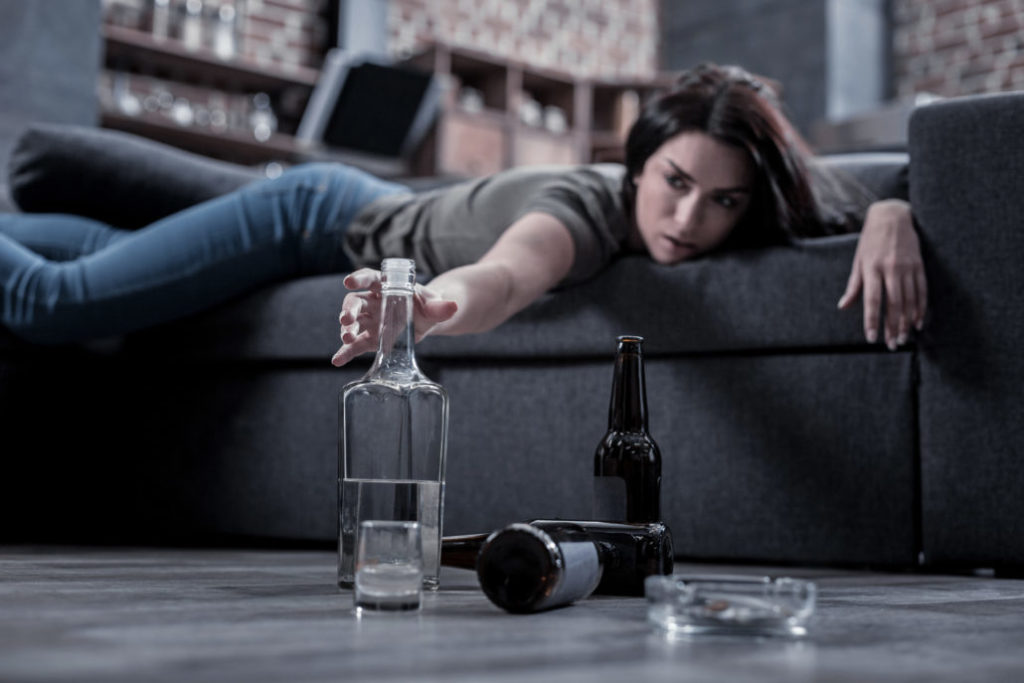Drug Overdose Symptoms
Drug overdoses might occur unintentionally for several reasons, such as:
- Taking a regular dose after tolerance has dropped (it mostly happen after a detox or withdrawal)
- Taking a more potent dose than the body is accustomed to
- Mixing substances of abuse
While some people do overdose intentionally, most overdoses are unintended. A drug overdose is a medical emergency, requiring immediate medical attention. That can help prevent death or lasting negative health outcomes.
Some general indications associated with numerous overdose conditions include severe chest pain, seizures, severe headaches, difficulty breathing, delirium, extreme agitation, or anxiety.
In addition to these drug overdose symptoms (including alcohol poisoning), other signs may include:
- Deviations from average body temperature (hyperthermia/hypothermia)
- Passing out or an unresponsive loss of consciousness
- Skin color changes (paleness or bluish tint to skin if a respiratory depressant was used; ruddy or flushed after cardiovascular overstimulation)
- Fast, slowed, or irregular pulse

- Nausea and vomiting
- Loss of balance
- Being unresponsive but awake
- Limp body
- Slow or erratic pulse
- Difficulty breathing, shallow or erratic breathing, or not breathing at all
- Choking or gurgling sounds
- Severe stomach pain abdominal cramps
In the context of illegal substance use, it is difficult for individuals to know exactly how much of a drug they are injecting, snorting, smoking, or taking orally. And, the danger of drug overdose symptoms may be severe when intravenous drug use is at play.

What is an Overdose?
An overdose occurs when you take a toxic amount of a drug or substance. It is also crucial to remember that not all overdoses are fatal or life-threatening. However, medical advice should always be sought immediately if an overdose is suspected. [1]
An overdose is a medical emergency that needs immediate medical attention. Always call an ambulance or get emergency help if you know or think that someone has had an overdose.
The latest numbers suggest an acceleration of overdose deaths during the pandemic. Overdose deaths involving cocaine also increased by 26.5 percent. These deaths link to co-use or contamination of cocaine with illicitly manufactured Fentanyl or heroin based on early research. Overdose deaths involving psychostimulants, such as methamphetamine, increased by 34.8 percent. The number of fatalities involving psychostimulants now exceeds the number of cocaine-involved deaths. [2]
Substances that People Can Overdose on include:
- Alcohol
- Prescription Drugs
- Over-The-Counter or Non-Prescription Medications
- Illicit Drugs
- Some Herbal Remedies
- Combination of Certain Drugs and Alcohol
- Opioid-involved overdose deaths rose from 21,088 in 2010 to 47,600 in 2017 and remained steady in 2018 with 46,802 deaths. A significant increase in 2019 to 49,860 overdose deaths followed.
- U.S. overdose deaths involving psychostimulants with abuse potential from 1999 to 2019. Overdose deaths rose from 547 in 1999 to 16,167 in 2019.
- Drug overdose deaths involving cocaine rose from 3,822 in 1999 to 15,883 in 2019.
- Drug overdose deaths involving antidepressants have risen steadily from 1,749 in 1999 to 5,269 in 2017. Since then, deaths had remained steady at 5,175 in 2019.
- There were 70,630 drug-involved overdose deaths reported in the U.S. in 2019. 68% of cases occurred among males. [2] Men are more likely to misuse multiple drugs than women.
Most of these deaths are preventable, but the “tough on crime” rhetoric of the decades-long drug war and the stigma connected with drug use have hindered the general adoption of life-saving overdose prevention and treatment plans.
Reasons for Overdose
Anyone, at any age or time, can overdose from drugs or alcohol. Even “stable” substance use can prompt a fatal overdose.
- Accidental : If a person takes the wrong substance or combination of importance in the wrong amount or at the wrong time without understanding that it could cause them harm
- Intentional : A person takes an overdose to get ‘high’ or inflict self-harm (which may be a call for help or a suicide attempt)

Drug Overdose Seizures
Seizures are a common complication of drug intoxication, and up to 9% of status epilepticus cases are caused by a drug or poison. While the specific drugs associated with drug‐induced seizures may vary by geography and change over time, commonly reported causes to include antidepressants, stimulants, and antihistamines.
Seizures occur generally as a result of inadequate inhibitory influences (e.g., gamma-aminobutyric acid, GABA) or excessive excitatory stimulation (e.g. glutamate) although many other neurotransmitters play a role. Most drug‐induced seizures are self‐limited. However, status epilepticus occurs in up to 10% of cases. Prolonged or recurrent seizures can lead to serious complications and require vigorous supportive care and anticonvulsant drugs. [3]
What Should Be Done During an Overdose?
Opioid overdose is now the leading cause of accidental death in the United States, surpassing even motor vehicle accidents. Overdose deaths are preventable, and, with naloxone, emergency treatment of known or suspected opioid overdose, you can save a life. [4]
First Aid for Overdose
- Call 911 for medical help
- Give naloxone if you have it. Spray Narcan Nasal Spray into one nostril, or inject intramuscular naloxone into the upper arm or thigh
- If the person is not breathing, do rescue breathing (mouth-to-mouth) or CPR if you know how
- Wait two minutes for the person to respond. Continue rescue breathing (or CPR if you are trained). If the person does not respond after two minutes, give a second dose of naloxone
- Lay the person on their side in the rescue position, so they do not choke if they vomit
- Wait for help to arrive
Overdose Risk Factors
If you abuse any substance, there is always a risk of overdosing. However, certain actions and conditions may further increase that risk, and it is important to be aware of them in order to reduce the chance of a person overdosing, these factors include:
- Prior overdose
- Abusing multiple substances, including alcohol
- Taking a large amount of the substance at once
- Dropping out of substance abuse treatment
- Gradually increasing the dose of the substance over time
- Low level of physical tolerance
- A reluctance to seek emergency help when needed
- Intravenous drug use
- Being recently released from prison
- Previous suicide attempts
- Resuming drug use after a period of abstinence
Tolerance refers to the state that occurs when your body has become accustomed to the presence of the drug, so it requires increased amounts or more frequent doses of the drug to achieve the kind of high you previously got with a smaller dose.
4 Ways of Preventing Drug Overdose
Illicitly manufactured fentanyl, heroin, cocaine, or methamphetamine (alone or in combination) were involved in nearly 85% of drug overdose deaths in 24 states and the District of Columbia during January–June 2019. More than 3 out of 5 overdose deaths involved at least one potential opportunity to link people to care before an overdose or to implement life-saving actions when an overdose occurred. [5]
Drug overdose deaths can be prevented. See the following strategies to learn how.

1. Enhance Linkage to Care
Many people are able to make significant changes in their lives and maintain remission by finding or creating social networks and environments supportive of recovery efforts. Seek out recovery supports, including mutual aid groups, recovery coaches, and peer recovery services. They can be an important part of each person’s recovery journey.
2. Reduce High-Risk Prescription Drug Use
Improving the way opioids are prescribed through clinical practice guidelines can ensure patients have access to safer, more effective chronic pain treatment while reducing the risk of opioid use disorder, overdose, and death. More than 11.5 million Americans, aged 12 or older, reported misusing prescription opioids in 2016. [6]
- An estimated 11% of adults experience daily pain
- Millions of Americans are treated with prescription opioids for chronic pain
- Primary care providers are concerned about patient addiction and report insufficient training in prescribing opioids
3. Increase Distribution of and Access to Naloxone
Expand access to and use of naloxone – a non-addictive, life-saving drug that can reverse the effects of an opioid overdose when administered in time.
Access to naloxone can be expanded through:
- Standing orders at pharmacies
- Distribution through local, community-based organizations
- Access and use by law enforcement officials
- Training for basic emergency medical service staff on how to administer the drug
4. Increase Access to Risk Reduction Services
- Expand the provision and use of naloxone and overdose prevention education
- Expand access to and provision of treatment for substance use disorders
- Intervene early with individuals at the highest risk for overdose
- Improve detection of overdose outbreaks due to fentanyl, novel psychoactive substances (e.g., fentanyl analogs), or other drugs to facilitate an effective response
Drug Overdose Treatment
Treatment for drug overdose symptoms differs depending on the situation. Ideally, those treating someone who has overdosed will know which drug was taken, the amount of the drug, the method of use, and if any other substances were involved. However, this information is not always available in emergency situations.
The healthcare provider may be able to use an antidote for certain drug overdoses. For instance, the drug naloxone can help reverse the effects of a heroin overdose. Naloxone, also known as Narcan, is the drug used by paramedics to revive people who have had an opioid drug overdose.

You Should Also Seek Emergency Aid Regarding Possible Overdose Immediately When Someone is having:
- Seizure
- Severe Headache
- Severe Chest Pain
- Breathing Difficulties
- Notably Paranoid, Agitated and/or Confused
The most obvious way to tell if these signs indicate overdose is to know you have taken drugs or have seen someone else misuse substances, including alcohol. Getting medical help quickly can undoubtedly make a big difference in the effectiveness of drug overdose treatment.
If you or a loved one is dealing with an addiction to alcohol or other drugs and is inclined or have a history of drug overdose symptoms, especially if you have experienced multiple relapses or overdoses in the past, then you already know that you need professional help. Please contact us today for a confidential free consultation with a member of our drug overdose team.
Sources:
[1] We Level Up – Treatment>News » International Overdose Awareness Day
[2] Overdose Death Rates – National Institute on Drug Abuse
[3] Treatment of drug‐induced seizures – National Center for Biotechnology Information, U.S. National Library of Medicine
[4] Prevent Overdose – NYC Health
[5-6] About CDC’s Opioid Prescribing Guideline – Centers for Disease Control and Prevention